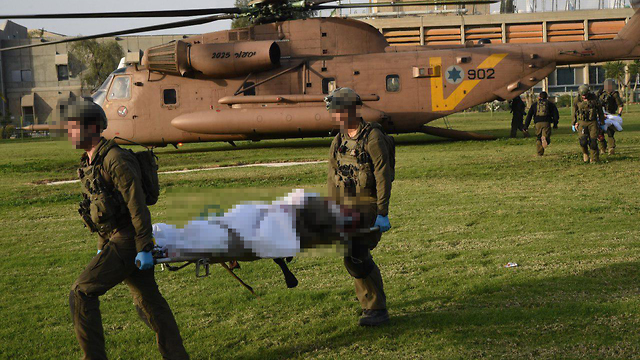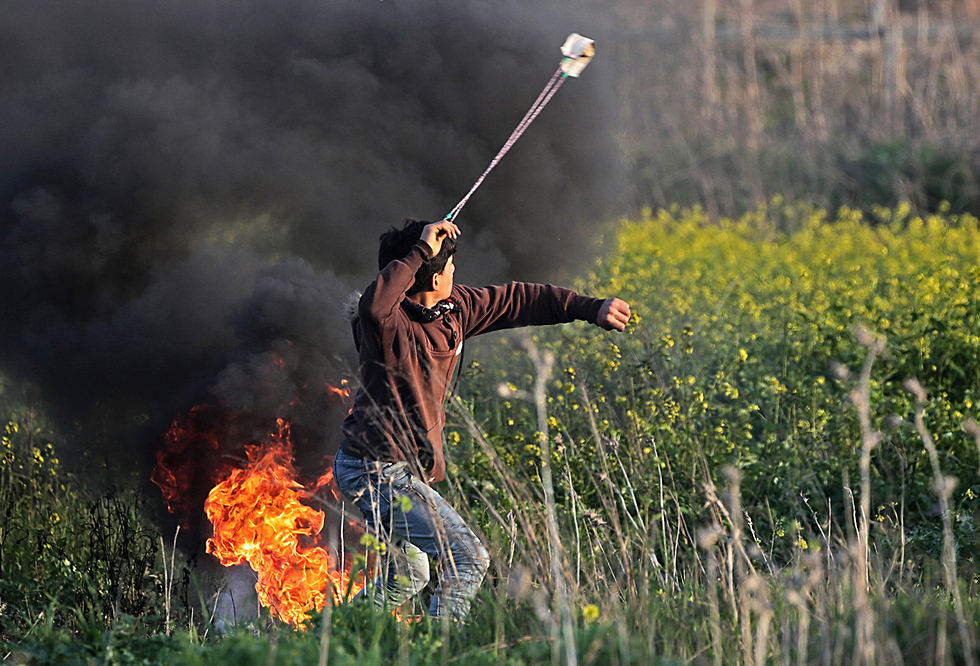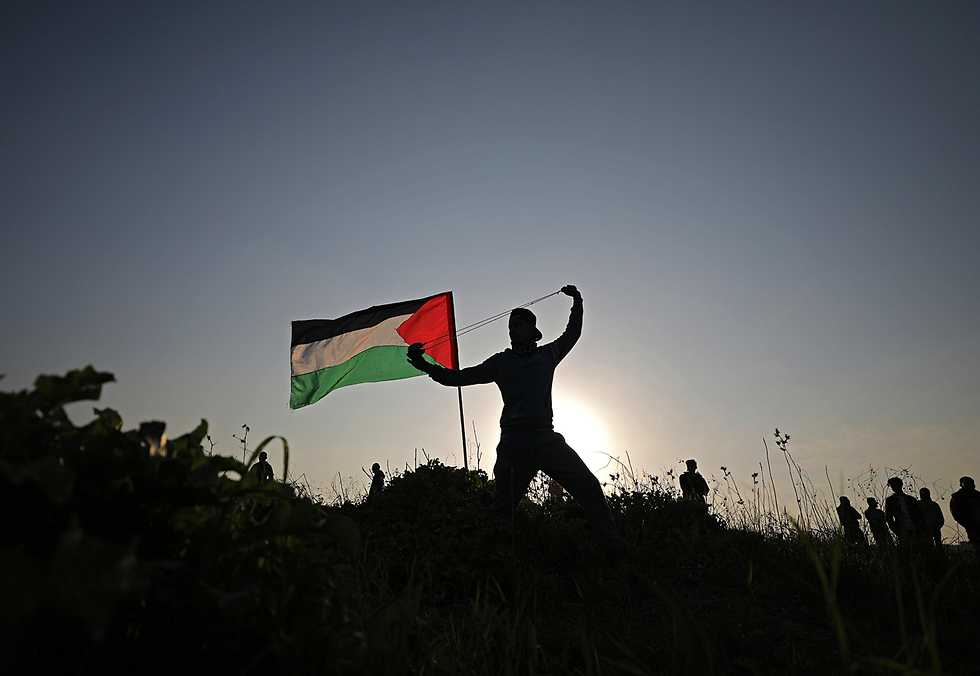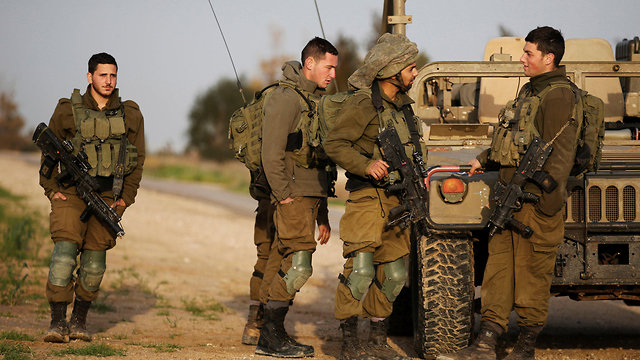One of these targets was a tunnel that hadn’t infiltrated Israeli territory yet, but the IDF had planned to attack and destroy if and when it did cross the border.
This set of targets was aimed at dealing Hamas an unusually severe military blow, making it clear that the IDF would no longer allow the organization to use civil protests for military purposes and for carrying out terror attacks. The damage and destruction sustained by Hamas’s military force were likely the reason the organization fired anti-aircraft missiles at Israeli jets and even announced it had done so.
The anti-aircraft fire was inefficient, but there is almost no doubt the missiles were also fired in an attempt to imitate last weekend’s Syrian anti-aircraft fire, which brought down an IAF fighter jet, and possibly also because of the serious practical and moral damage caused by the IDF strikes.
The rockets fired at the Gaza border area and Mishmar HaNegev area on Saturday likely weren’t launched by Hamas, but rather by the “rebel” organizations. There is no doubt, however, that the distress of the civil population in Gaza and the events in the north are bringing us closer to the next escalation in the south.
Hamas has long realized the potential infrastructure for terror attacks that lies in the civilian protests on the fence. The rebel organization that planted the explosive device used this infrastructure and was basically acting on Hamas’s behalf. What began as allegedly spontaneous rage protests by civilians near the fence following the installation of metal detectors at the entrance to the Al-Aqsa Mosque and then following US President Donald Trump’s recognition of Jerusalem as Israel’s capital, turned into a regular phenomenon in recent months.
Every Friday, Hamas brings young Palestinians to the fence, where they set tires on fire, approach the fence, cross it sometimes, and hang flags on it. The entire time, they are closely supervised by armed Hamas men sitting in observation towers. The protesters catapult marbles at the IDF forces, but even when the soldiers fire at them to drive them away from the fence or hit their legs, and even when this fire occasionally kills Palestinians, Hamas avoids firing back and hardly responds. This pattern of action likely stems from Hamas’s desire to maintain the calm while building the infrastructure for a different activity, which has been exposed by Hamas in the past two weeks. Hamas’s spokespeople have explicitly stated that, in case of an escalation of the situation in the strip, they plan to hold mass protests and get tens or hundreds of thousands of people to approach the fence, cross it and march towards Israel. They know this will create a dilemma both for the IDF and the Israeli government—should they open fire and risk killing many of the marchers, or avoid shooting and risk having the Gazans break into Israeli territory?The rebel organizations, who were apparently paying close attention to the talk about this pattern of action, decided to realize this potential earlier than Hamas had planned. They saw the IDF working to neutralize any suspicious object near the fence, and prepared a trap. They filled the rod of the flag, which was allegedly hang up during the protest, with explosives, turning it into a lethal device that wounded members of the bomb disposal unit and Golani soldiers.

One of the soldiers wounded by the explosive device arrives at the Soroka Medical Center in Be’er Sheva (Photo: Haim Hornstein)
As far as the IDF is concerned, this is a wakeup call demonstrating the dangerous potential in allegedly innocent civilian protests near the fence. The army will have to decide whether to allow such protests next Friday and how far from the border fence. The IDF can inform Hamas through the coordinator of the government activities in the territories, through the Egyptians, through leaflets and eventually by firing at protestors’ legs, that the protesters will not be allowed to move beyond 200-300 meters west of the fence.
This area, which used to be called “the perimeter,” still exists both for gunmen and for civilians. The “special security zone” has been reduced during the Friday protests along the fence, and the IDF will now have to enforce it. If many Palestinians are hurt, it could lead to escalation.
In a small and painful operation, the Popular Resistance Committees, one of the organizations operating against Hamas, managed to raise the tensions and undermine the stability along the border fence.
The second thing the IDF will have to do is look into the procedure of handling explosive devices along the fence. There are several procedures aimed at helping the soldiers detect explosive devices or suspicious objects and neutralize them from afar, by shooting at them or sending a dog to sniff them. These procedures have been implemented successfully since Operation Protective Edge, and explosive devices placed along the fence occasionally have been detected and neutralized. Saturday’s incident was the first time someone was hurt by one of these devices.
These procedures should therefore be emphasized and perhaps adapted to the new reality, in which every object placed along the fence has the potential of being an explosive device.
Fence protests as an infrastructure for terror attacks : http://ift.tt/2CuFGhr




No comments:
Post a Comment